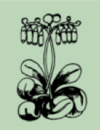June – Plants for Butterflies, Birds and Bees
This month is one of the sunniest and the time when we all hope that our gardens will be full of butterflies and bumblebees, if you feel your garden has not as many as you would like, now is the time to plan for a more wildlife friendly environment.
There are basic ingredients that help to encourage more wildlife. At Stillingfleet we have several areas especially designed to protect insect life. The garden and meadow have been planted to give diverse habitats for invertebrates, mammals and birds. Many plants are grown for their pollen or nectar output and even the smallest space can be improved with a little thought. It is good to remember that ladybirds, lacewings, Tits and Warblers keep greenfly and black fly under control, saving time spraying and helping protect the environment.

Orchids in the meadow
Our meadow is ancient grassland and after fifteen years of care is now full of wildflowers, including three varieties of orchid. The grass is left long and flowers are allowed to seed before we cut the grass in early September. The grass is then removed as we do not want the soil to be enriched with the decaying grass. The poorer the soil the thinner the grass grows allowing more flowers to establish. Part of the grass is then cut very short with the lawn mower so the spring bulbs are visible. Other parts are left slightly longer to give cover to insects and invertebrates during the winter. The meadow has several plants that are especially good for butterflies and moths; early in the year we have primroses, cowslips and oxlip, I often see Bee Flies at that time of the year, a fascinating insect as it pollinates our primroses but is a parasite and lays its eggs in bumble bee nests and then devours the larva.

Chimney Sweeper
We also have Pignut, an umbellifer rather like low growing cow parsley, this is the food plant of a small black day-flying moth called a Chimney Sweeper and in the summer we have clouds of them flying in the meadow. Our meadow is a type of lowland hay meadow and one of the most important plants is Knapweed, host to several varieties of butterfly and insect, flowering in July and August. Other plants for butterflies are Scabious, Cranesbill, Meadowsweet and we have a cluster of Teasel plants grown especially for the birds and the seed heads are left uncut for the winter, we often see Goldfinches busy retrieving the seed.
I hope I have encouraged you all to look at your gardens and see if there is a simple way you can encourage wildlife into your garden, nothing is more wonderful than watching butterflies on your plants or listening to the blackbird singing.
Learn more about wildlife in the garden by joining us on our Wildlife Day in June


